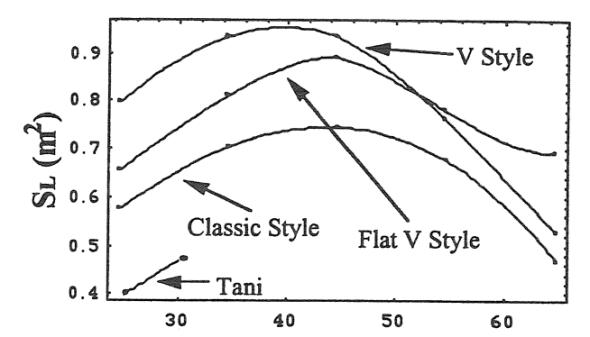This post originally appeared in Business Insider.
In ski jumping, it’s all about how far you fly. Skiers initially hold their bodies in a position that reduces air drag in order to gain as much speed as possible coming down the take-off ramp, or in-run. But once in the air, athletes change their posture and the position of their skis to maximize air lift, which increases the length of their jump.
Ski jumpers used to hold their skis parallel to each other, but learned that they could catch more of the air pushing up underneath them if they separated their skis, with the tails pointing toward each other. This V shape has been the standard style since the 1990s.
“Skiers are trying to play glider,” Louis Bloomfield, a physicist at the University of Virginia in Charlottesville, told Inside Science back in 2010. “You push the air down, the air pushes back, pushes you upward.”
Ski jumping techniques have changed dramatically over the last 200 years, but all Olympic medalists use the V Style today.
A Brief History
Tullins uses the Kongsberger technique at the 1924 Winter Olympic Games.
In the beginning, skiers used an “upright style.” Skiers stood straight up during the jump and “would sail down the hill upright,” Wayne Johnson writes in his book “White Heat: The Extreme Skiing Life.” In 1860, Norwegian Sondre Norheim, widely-known as the father of ski jumping, set the world distance record at 99 feet using this method.
The Kongsberger technique, developed by Norwegians Jacob Thulin Thams and Sigmund Ruud, replaced the upright style after World War I. The skier’s upper body is bent at the hips with an extreme forward lean, the arms are extended in front (as if the athlete is diving over his or her skis), and the skis are parallel to each other. The technique improved the jumping distance from around 150 feet to more than 300 feet.
The next big improvement came in the mid-1950s from Andreas Daescher of Switzerland. In the Daescher style the arms were placed backward next to the body. The skis were still parallel. This held on as the standard in ski jumping for at least three decades.
Changing the Game
The turning point came in 1985 when Swedish jumper Jan Bokloev introduced the “V Style.” The skis are placed in a “V” shape, rather than parallel, and the head is placed down between the skis. The modification led to greater jumping distances. It also enabled the skier to land at a safer speed, reducing the chances of injury.
There are two phases during flight in ski jumping. In Phase I, the jumper quickly takes on a body position. In phase II, the jumper completes their final form, such as a V style:

Jin, Shimizu, Watanuki, Kubota, and Kobayashi
According to Johnson, wind tunnel tests showed that the V Style improved air lift by 28 percent, meaning the jumper can remain in the air for a longer period of time. “Now skiers were routinely jumping well over distances of five hundred feet on ‘ski-flying’ hills such as Suicide in Michigan,” he wrote.
Computer simulations by Japanese researchers show that during early flight phase, the lift is much higher when the skis are splayed in a V than when the skis are parallel (called classic style in the chart).
The lift area values for V style are higher than those for classic style:

Jin, Shimizu, Watanuki, Kubota, and Kobayashi
However, during the later phase of flight, the V produces a larger drag, helping the athlete to slow down on the landing.
The V Style was not immediately embraced. It resulted in longer jumps, but fewer style points since it broke the standard of parallel skis. (Polish jumper Miroslaw Graf was first to experiment with the V Style in 1969, but it went unrecognized since it wandered from what was considered the ideal style of the time.)
According to the official Olympic website: “Initially ridiculed, this technique proved so successful that by 1992 all Olympic medalists were using this style.”
See also: The 17 Most Ridiculous Photos From Sochi’s Nightmare Olympic Hotels
